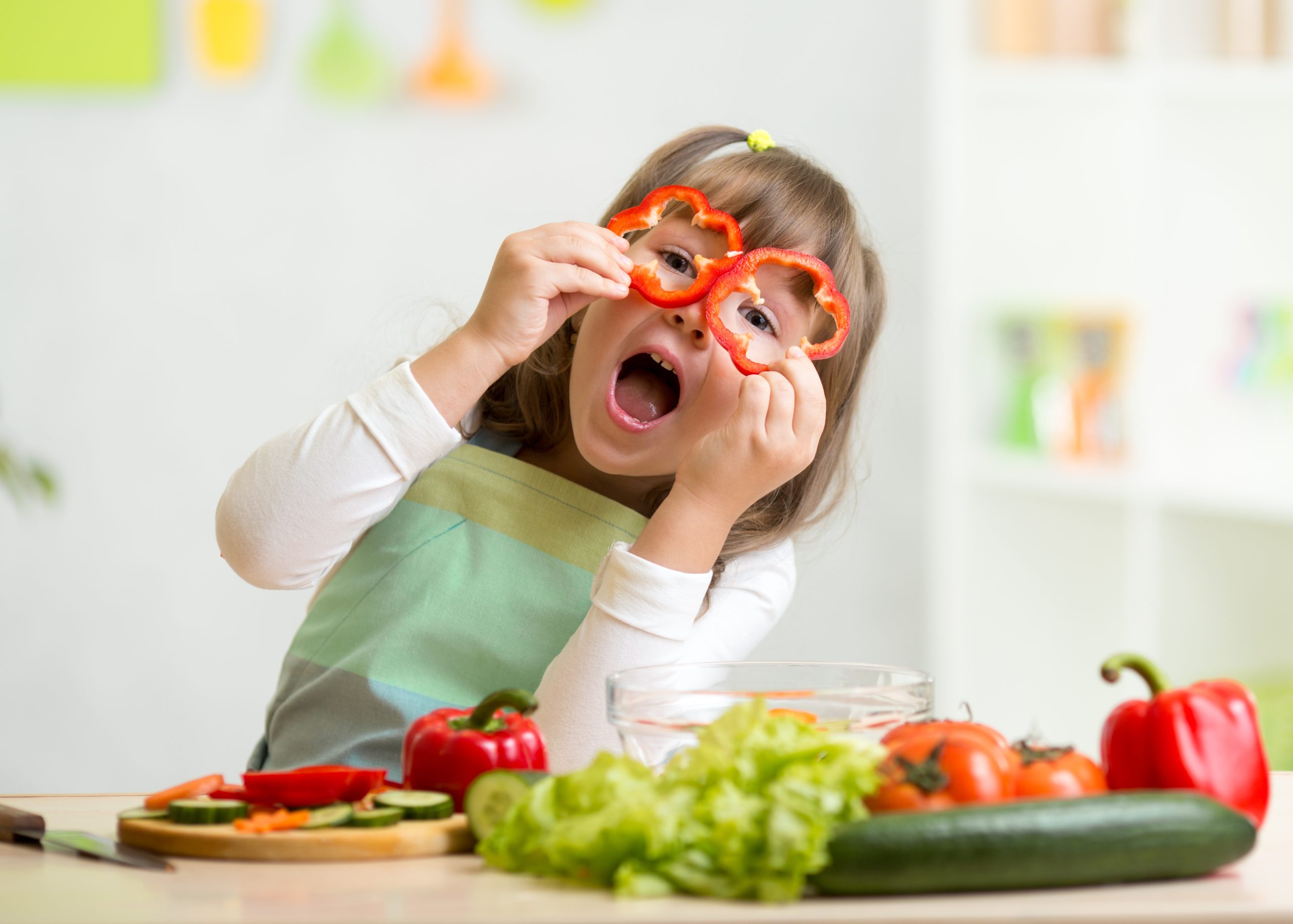A “happy plate” is one in front of a child who’s permitted to listen to her body, not our out-of-date “rules.” – Maryann Jacobsen.
Children are usually not shy about telling us when they are hungry or full. They will signal they have had enough by pushing away a spoon or turning their head away from the food being offered. In the same fashion, they will ask for more if they still feel hungry. Sometimes, however, it would be helpful to see inside their small stomachs to know if what they are saying is really true.
Parents know how hard it is to figure out how much their kids need to eat. A study published in the Journal of Paediatric Psychology states that when parents pressure children to eat more food than they want, kids learn to ignore their internal cues of hunger and fullness. Thus their normal eating behaviour is disrupted, making children vulnerable to unhealthy weight gain. A leading family nutrition expert, registered dietitian and the founding editor of Raise Healthy Eaters, a popular blog about family nutrition, Maryann Jacobsen, further affirms this by criticizing the age-old feeding strategy of asking children to clean their plate or forcing them to eat “just two more bites”. In doing so, parents are negatively affecting children’s food regulation skills as they age.
Pushing food is not always about getting children to eat more “” it’s also about the quest to get them to eat healthy. Caregivers may insist children eat fruits and veggies before other items, or reward children with dessert for eating more healthy food – Maryann wrote in a blog for the New York Times.
Unfortunately, this strategy makes children less likely to intrinsically prefer healthy foods while making sweets even more desirable. And with all the negotiations at the table, children lose sight of their internal signals of hunger and fullness. As they grow and get accustomed to this, they don’t quite understand or know what being full actually means. Over time they internalise how they should be eating, and continue eating in that manner.
Children must follow their bodies’ hunger and fullness cues to eat enough, but not too much
Therefore, parents should make teaching children to recognize their internal hunger and fullness cues a priority even if it means their kids will eat fewer vegetables in the meantime. According to Jacobsen, a good start to do so is asking children the question: What Does Your Tummy Say? especially at mealtimes or anytime they ask for more food or want to leave the table. Let them eat as much or as little as they want during scheduled meals and snacks. The key is to help children match how much they eat with their internal feelings of hunger and fullness in order to regulate their food intake. Parents can support this process by structuring meals, providing variety, setting clear limits, and allowing hunger and fullness to guide eating.

What Does Your Tummy Say? Challenges for parents
While stressing the importance of this question Jacobsen also identifies three obstacles that can get in the way of teaching kids to become intuitive eaters for life:
- The child’s physical appearance – If parents consider their child as being too small or too big for his/her age, they are less likely to accept his/her appetite when they aren’t comfortable with their child’s size. However, pressuring “little ones” to eat more or trying to get “big ones” to eat less has the opposite effect. The right strategy in this case is to help children become aware of how they feel, rather than trying to get them to eat a certain way that may not match their appetite or needs.
- The nature of kids eating – Kids who go through growth spurts can be non-stop eating machines as their bodies drive them to seek out food to support the rapid growth. On the other hand, when they are not growing as much, their appetite wanes. Therefore, it’s not realistic or in line with child development to expect them to always eat the same amount of food. Instead, helping them notice the difference between real hunger and something else is crucial.
- A food-centric environment – We live in a food-centric environment in which the next meal, snack and eating opportunity is certain and bigger than ever. There are more opportunities to eat mindlessly, making it difficult for parents to do their job of feeding. There are also more packaged and processed options that children easily accept which is another great temptation for parents.
Resources and activities that can help kids tune into feelings of hunger and fullness
Being aware that many children’s books talk about what kids should eat, but few talk about how Jacobsen came up with the idea for a story to help school-age kids understand this important aspect of eating. The story is about 7-year-old Emily who has grown up listening to her tummy. Her mom challenges her to find others who don’t because Emily assumes everyone does. She first finds Larry the Lunch Monitor, who pushes kindergartner Sam to eat so he doesn’t ask for an early snack. Next is Grandpa Jerry, who cleans his plate because he grew up poor and hates to waste food. The last is Emily’s Aunt Jane, who is always trying to control how much she eats by going on diets. Her mom helps her teach each of these people why listening to their tummy is a better option.
In addition to reading this and similar books and discussing with kids why it’s important to listen to their tummy, parents can try out the following exercise:
- Make some small “stomachs” by filling a few stockings with varying degrees of salt.
- Strap these “stomachs” onto some dolls, at tummy level.
- Ask your children questions like, “Which doll’s tummy is hungry?” “Which doll is a little full?” “Which doll is really full?”
- Next, have your children place their hands on their own tummies and tell you whether they are hungry, a little full, or very full.
- Go back to the dolls and ask your children to choose the doll whose stomach best matches their own.
- Finally, practice this exercise at varying times throughout the day to “catch” your kids at different stages of hunger.
Teaching your kids to stay in touch with their hunger and fullness is one of the best gifts you can ever give them. If children are allowed to guide their eating through intuition they will grow into adults with lower rates of disordered eating and diet less. Because when they reach for something to eat they’ll ask themselves that same question they heard many years ago: What does my tummy say?
Are you a member of the “Just Two More Bites” club or do you teach your children self regulation skills at the dining room table? Share with us your stories, tips and experience.

















